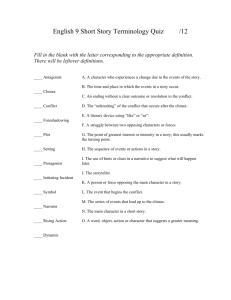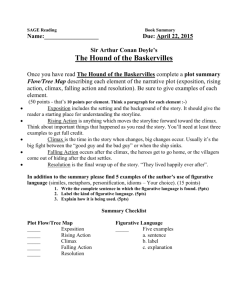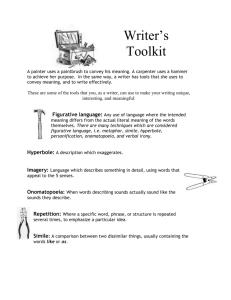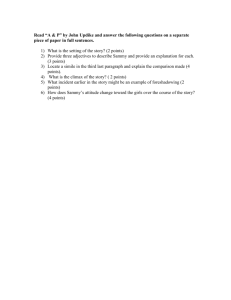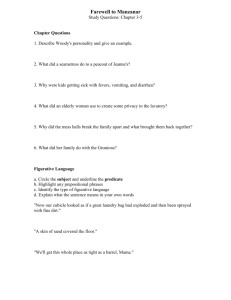LITERARY TERMS TEST Select the best answer 1 A person or thing
advertisement
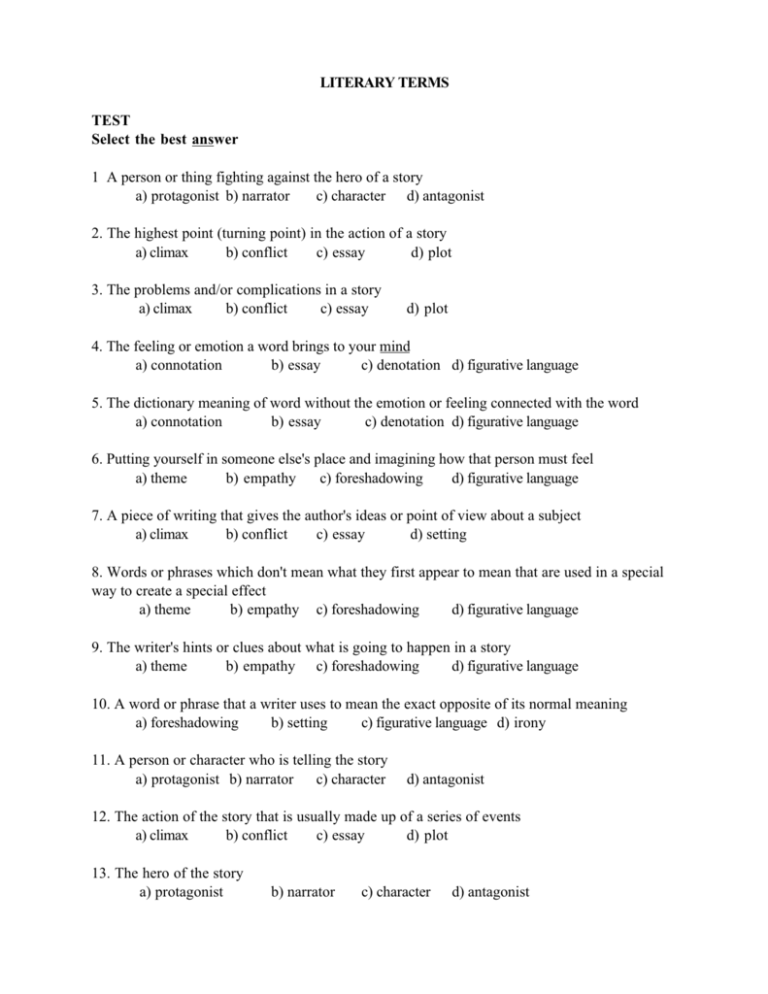
LITERARY TERMS TEST Select the best answer 1 A person or thing fighting against the hero of a story a) protagonist b) narrator c) character d) antagonist 2. The highest point (turning point) in the action of a story a) climax b) conflict c) essay d) plot 3. The problems and/or complications in a story a) climax b) conflict c) essay d) plot 4. The feeling or emotion a word brings to your mind a) connotation b) essay c) denotation d) figurative language 5. The dictionary meaning of word without the emotion or feeling connected with the word a) connotation b) essay c) denotation d) figurative language 6. Putting yourself in someone else's place and imagining how that person must feel a) theme b) empathy c) foreshadowing d) figurative language 7. A piece of writing that gives the author's ideas or point of view about a subject a) climax b) conflict c) essay d) setting 8. Words or phrases which don't mean what they first appear to mean that are used in a special way to create a special effect a) theme b) empathy c) foreshadowing d) figurative language 9. The writer's hints or clues about what is going to happen in a story a) theme b) empathy c) foreshadowing d) figurative language 10. A word or phrase that a writer uses to mean the exact opposite of its normal meaning a) foreshadowing b) setting c) figurative language d) irony 11. A person or character who is telling the story a) protagonist b) narrator c) character d) antagonist 12. The action of the story that is usually made up of a series of events a) climax b) conflict c) essay d) plot 13. The hero of the story a) protagonist b) narrator c) character d) antagonist TEST: Select the best answer LITERARY TERMS 14. The subject or message being written about or discussed a) theme b) empathy c) foreshadowing d) plot 15. The part of a story which follows the climax or turning point leading to the ending of the story a) plot b) foreshadowing 0 rising action d) falling action 16. A form of figurative language in which an idea, object, or animal is given characteristics of a person. The rock stubbornly refused to move. a) identity b) personification c) simile d) metaphor 17. A form of figurative language in which two different things are compared using "like" or "as". The car handled like a tank. a) similar identity b) personification c) simile d) metaphor 18. A form of figurative language in which two different things are compared without using "like" or "as". The car was a tank when it came to handling. a) comparative identity b) personification c) simile d) metaphor 19. The central part of a story during which various problems arise, leading up to the climax a) plot b) foreshadowing c) rising action d) falling action 20. The time and place in which the action of the story takes place a) characterization b) setting c) plot d) irony

